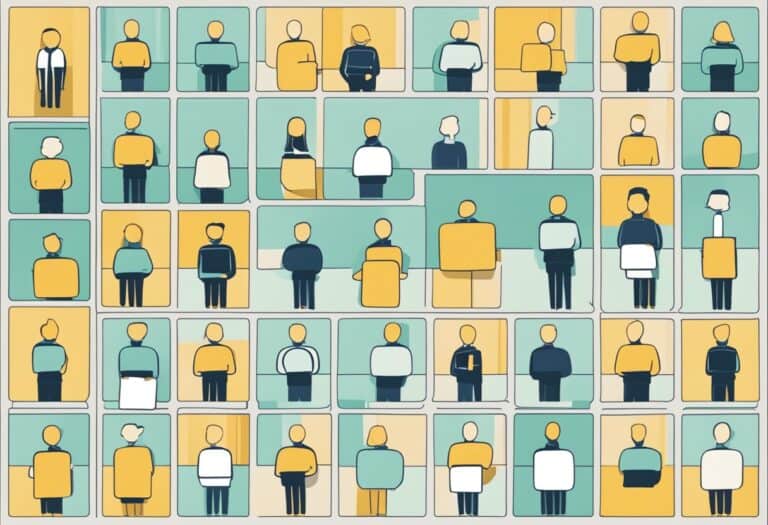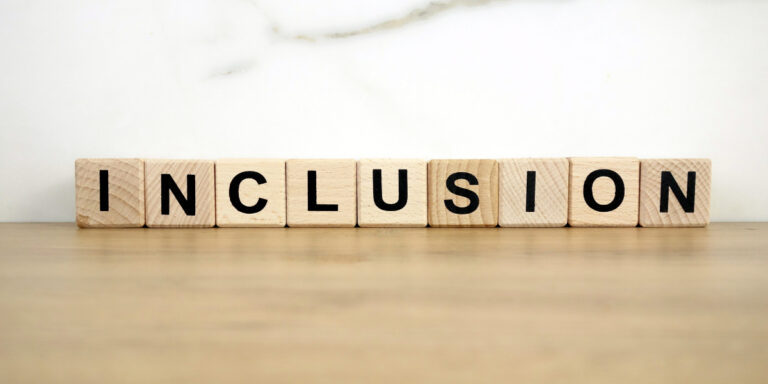In today’s tumultuous world, the yearning for inner peace and conflict resolution has become increasingly pertinent. Two practices that are often mistaken but provide separate functions are meditation and mediation.
While both aim to bring solace and comprehension, they vary in their practice and utilization. Meditation is an individual practice focused on self-reflection and stress governance. It is an instrument for persons to find clearness and placidity within themselves.
On the flip side, mediation is a conducted exchange between parties to settle disputes. It is a course that necessitates a qualified professional to direct constructive debates and attain mutually accepted resolutions.
This composition intends to cast illumination on the disparities between meditation and mediation, exploring their definitions, aims, techniques, availability, and advantages. By understanding these dissimilarities, people seeking liberation can make educated decisions about which practice best suits their needs.
Meditation Definition
Meditation is a personal practice meant for contemplation and reflection. It is a way of regulating and managing stress, providing many benefits such as improved self-understanding, heightened focus, decreased nervousness, and heightened overall wellbeing.
It is essential to distinguish meditation from mediation, which are sometimes confused. A common misconception is that meditation can substitute the mediation process in settling disputes. Even though meditation can help prepare individuals for mediation by inducing a tranquil and centered condition, it cannot replace the necessity of a moderated dialogue between conflicting sides.
Meditation seeks individual serenity and introspection, while mediation necessitates establishing understanding and resolving disputes between parties. Comprehending the disparities between meditation and mediation is vital for utilizing these procedures properly and experiencing their full potential.
Mediation Definition
The act of mediation necessitates the facilitation of discussions between two or more individuals with the intention of settling disputes and instilling comprehension.
It is a structured and guided process that seeks to provide a secure place for individuals to articulate their needs and apprehensions. The mediator, who is a learned and accredited specialist, has an essential role in the mediation procedure. They serve as a neutral third party, aiding to create an atmosphere of assurance and open communication. The mediator does not side with anybody or make decisions for the participants.
Instead, they help in recognizing shared interests, probing possibilities, and generating inventive solutions. Via attentive listening and efficient communication techniques, the mediator directs the parties towards achieving a mutually satisfactory outcome.
The mediation process can happen in a variety of contexts, like the legal system, workplace, community, or private relationships. It offers a transformative path to conflict resolution, promoting understanding, and encouraging harmonious resolutions.
Purpose of Meditation
Engaging in meditation is an activity that seeks to bring about a sense of inner peace and serenity. It is associated with many benefits, such as reducing stress levels, encouraging relaxation, and boosting overall wellbeing.
Meditation allows individuals to focus on the present, setting aside anxious thoughts and apprehensions while connecting with their inner selves. Regular meditation helps to improve concentration, heighten self-awareness and foster a greater consciousness in everyday life.
Practitioners can incorporate meditation into their daily lives by using various techniques, for example, breath awareness, body scrutiny or benevolence meditation. By devoting time to meditation, individuals can access a calmer state of mind, lucidity, and pleasure, eventually leading to a more gratified and harmonious life.
Purpose of Mediation
Mediation serves as an approach to problem-solving that enables those in disagreement to enter into a constructive dialogue and reach a mutually satisfactory arrangement. A neutral third party, known as the mediator, aids communication between the conflicting sides.
Here are the essential goals of mediation:
- Conflict settlement: Mediation seeks to address disputes by providing a secure, ordered atmosphere for individuals to articulate their worries and expectations.
- Interpersonal proficiency: Mediation helps individuals acquire effective communication skills, such as active listening and expressing oneself accurately, which can be applied in various areas of life.
- Mutually beneficial arrangements: The ultimate purpose of mediation is to arrive at settlements that meet the wishes and needs of all parties involved, fostering a sense of contentment and collaboration.
- Sustaining relationships: Mediation concentrates on preserving relationships by stimulating understanding and compassion between parties, allowing them to keep a positive ongoing relationship, if desired.
Through the mediation process, individuals can gain resolution, improved communication abilities, amicable arrangements, and the upkeep of relationships.
Practice of Meditation
Globally embraced by individuals, meditation is an influential tactic that encourages self-awareness, psychological stamina, and mental lucidity. It boasts a plethora of advantages, from stress abatement to heightening concentration and augmenting all-around prosperity.
Through meditation, individuals can create a strong ambience of inner calmness and serenity. There are a variety of methods for successful meditation, such as mindfulness meditation, loving-kindness meditation, and transcendental meditation.
Mindfulness meditation necessitates concentrating one’s attention on the present, enabling views and feelings to arise without evaluation. Loving-kindness meditation necessitates growing feelings of fondness and compassion for oneself and others. Transcendental meditation necessitates silently repeating a mantra to achieve a condition of profound tranquility and acuity.
Despite the technique employed, regular meditation practice can result in a greater perception of self-awareness and a deeper bond with oneself and the universe.
Practice of Mediation
Mediation involves a neutral third person aiding conversations between conflicting sides to come to an arrangement. The part of the mediator is to make a secure and respectful environment where everyone can communicate their worries, needs, and points of view.
To mediate accurately, the mediator applies conflict resolution strategies that inspire attentive listening, sympathy, and open correspondence. They help the sides discover shared interests, analyze alternative solutions, and negotiate contracts that are advantageous for everybody.
Mediation empowers the conflicting parties to have a direct input in the result, boosting a feeling of possession and satisfaction with the resolution. By focusing on understanding and collaboration rather than blaming and judging, mediation can cure, revive connections, and promote peace.
It is a transformative procedure that enables individuals to move past conflict towards liberation and personal growth.
Accessibility of Meditation
The accessibility of meditation is profoundly impacted by several elements, such as the availability of resources, cultural recognition, and individual dedication to the practice. Different meditation techniques are available, and those just starting out may have difficulty locating an approach that resonates with them.
To boost accessibility, it is critical to offer a range of meditation techniques that can match different preferences and requirements.
Making meditation resources easily accessible, such as guided meditation apps, online courses, and community classes, can help novices address any issues they may come across.
Societies that value and promote mindfulness practices tend to have more resources and support available, which can be seen as a reflection of cultural acceptance. Ultimately, individual commitment to the practice is imperative for accessibility, as meditation necessitates constancy and commitment to reap its full rewards.
Accessibility of Mediation
Transitioning from the previous subtopic of accessibility of meditation, it is paramount to comprehend the accessibility of mediation.
While meditation is a personal practice that can be accessed by any person, mediation, on the other hand, necessitates a trained and certified professional. Despite this, there are initiatives to enhance the accessibility of mediation through outreach programs. These projects strive to make mediation services more attainable and affordable to individuals and communities in need.
Moreover, there is a growing awareness of the significance of incorporating mediation in education. By teaching conflict resolution and mediation skills at a young age, we can arm future generations with the tools to peacefully manage conflicts and contribute to a more harmonious society.
Accessibility of mediation is significant in promoting understanding, healing, and peace in various settings, from personal relationships to the judicial system.
How Does Kurt Lewin’s 3-Stage Model Relate to the Differences Between Meditation and Mediation?
Kurt Lewin’s change model highlights the process of unfreezing, changing, and refreezing. When applied to the differences between meditation and mediation, it can be seen as a way to understand the way individuals can “unfreeze” their mindset through meditation, make the necessary change, and then “refreeze” in a new, more meditative state.
Benefits and Applications
Considering the advantages and utilization of mediation, it has the potential to facilitate successful correspondence and conflict resolution skills.
Mediation provides a variety of profits, permitting parties to express their feelings and worries in a secure and monitored environment. It enables active listening, sympathy, and comprehension, which could result in mutually satisfactory answers and improved relationships.
Mediation is relevant in numerous contexts, such as family clashes, workplace clashes, community problems, and lawful matters. It can be utilized to resolve disputes among people, groups, or even countries.
Additionally, meditation has numerous advantages for individuals, including strain decrease, improved focus and concentration, increased self-awareness, and emotional well-being. It is a training that can be incorporated into everyday life, helping individuals to find internal harmony and cultivate a feeling of freedom from their musings and emotions.





